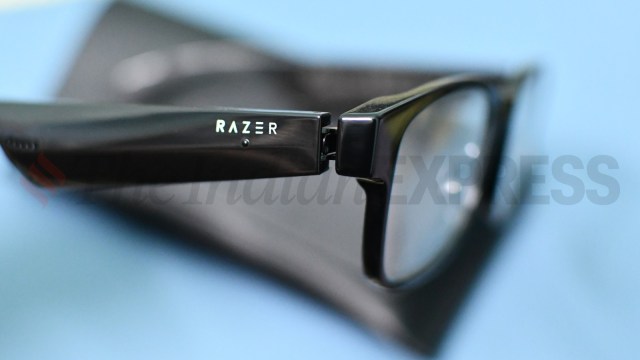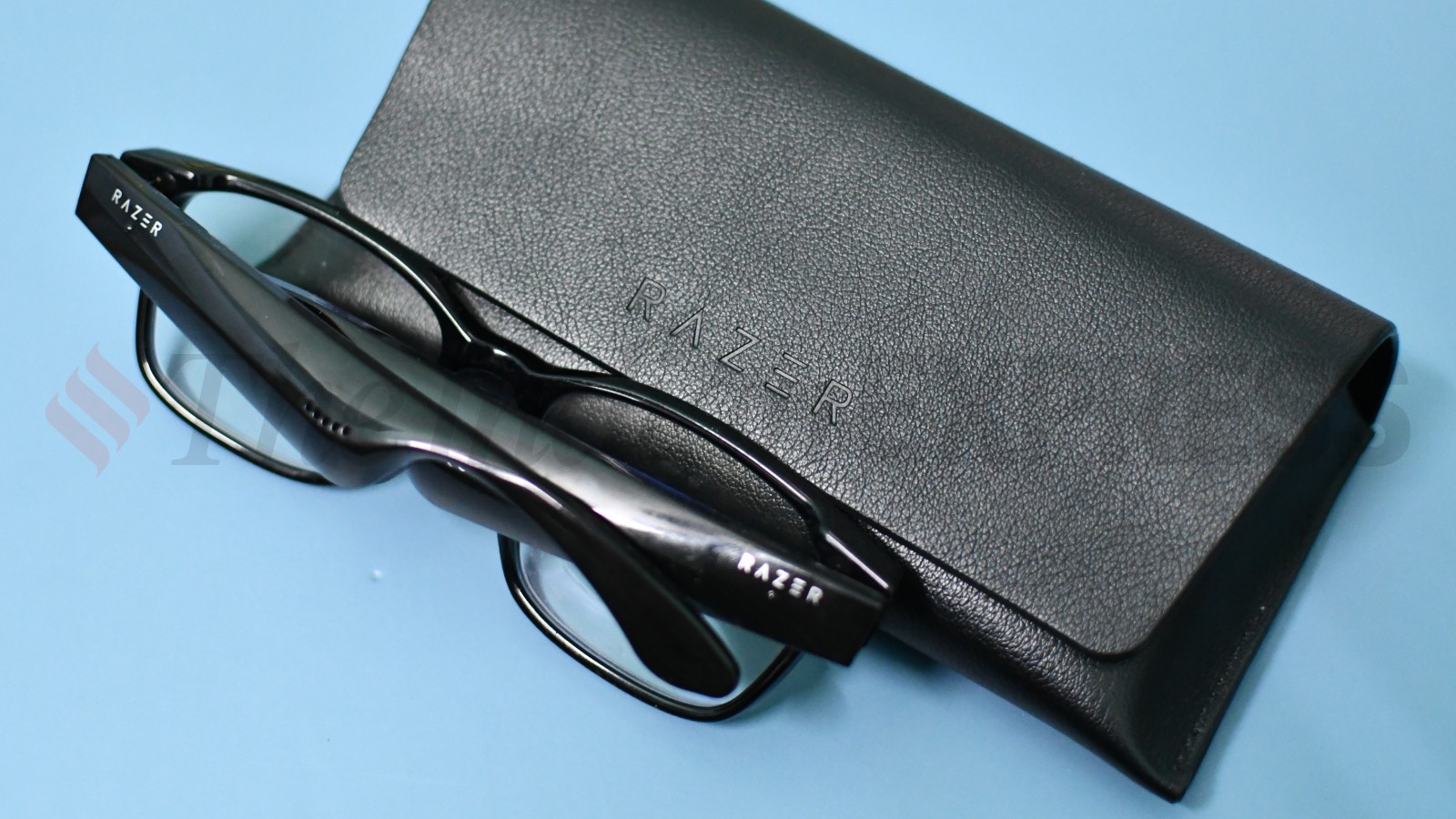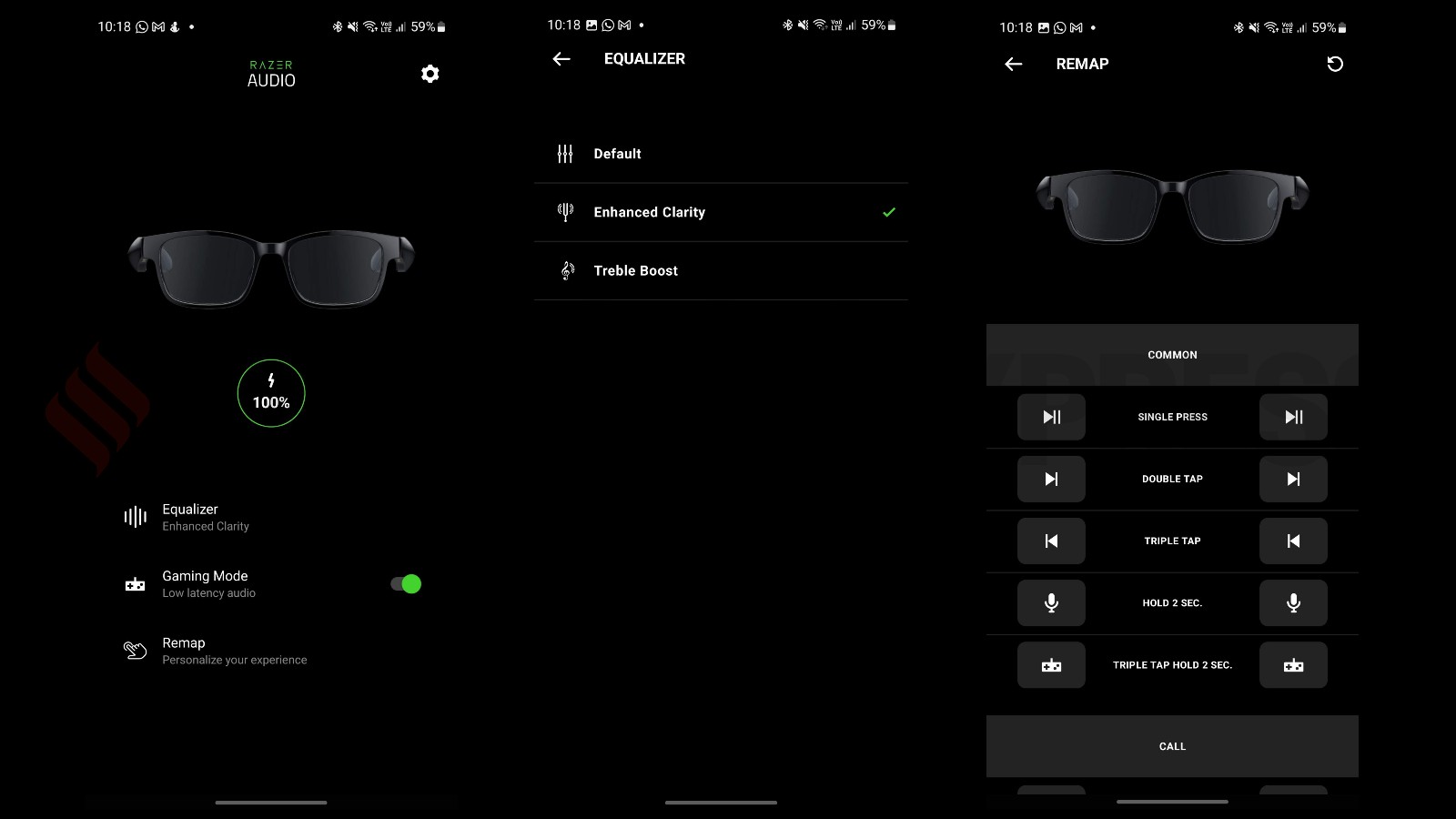How Razer Anzu became my favourite pair of sunglasses and almost replaced my wireless earbuds
Razer Anzu, unlike the conventional wireless earphones offer true ambience mode.
 Launched back in 2021, the Razer Anzu still feel relevant in 2023 (Image credit: Vivek Umashankar/The Indian Express)
Launched back in 2021, the Razer Anzu still feel relevant in 2023 (Image credit: Vivek Umashankar/The Indian Express) Ever since the removal of the 3.5mm headphone jack on the iPhone 7, brands have been looking at offering wireless earphones in various form factors. While neckband and TWS are the two most popular formats, there is also a new kind of wireless audio device that’s picking up popularity, one that replaces sunglasses. One such product is the Razer Anzu.
I recently got hold of one, as it was available for just around Rs 4,000 on Amazon. Here is my experience with the Razer Anzu and how it differentiates itself from headphone neckbands, and TWS.
The Razer Anzu was originally launched in early 2021 for $200 or approximately Rs 15,000. At that price, the product did feel a bit expensive. However, it is now available at a much lower price, making these a great pair of affordable Bluetooth-enabled smart glasses.
 The carry case of Anzu feels really premium (Image credit: Vivek Umashankar/The Indian Express)
The carry case of Anzu feels really premium (Image credit: Vivek Umashankar/The Indian Express)
The product came in a secure package and I liked how high quality the carry case feels, which is made out of faux leather. In fact, the Razer Anzu carry case feels more robust and premium than the case I got with more expensive Ray-Ban sunglasses.
Similarly, I also liked how there are no on/off buttons on the device. Open the temple to turn on the device and close the temple to turn it off. This reminded me of my MacBook Air. This simple feature makes using this sunglass a lot easier.
 Razer audio offers more control over the Anzu (Image credit: Vivek Umashankar/The Indian Express)
Razer audio offers more control over the Anzu (Image credit: Vivek Umashankar/The Indian Express)
There is an app to control various functions
As this is a smart device, of course, there is an app — Razer Audio, available for both Android and iOS devices. From fine-tuning the audio to updating the firmware, the app is very intuitive and easy to use. As this is a Razer product, there is even a gaming mode, which cuts down audio latency to an extent.
In my experience of using the Razer Anzu, I felt that the frame is slightly on the wider side, which makes me have to adjust it every once in a while. I could play music, attend meetings, and even take calls. For the first few instances, I did feel a bit of fatigue around the nose area and on the ears, as the frame is slightly on the thicker and heavier side. However, after using these smart glasses for a while, I didn’t feel much discomfort.
 Ambience mode comes naturally to the Anzu (Image credit: Vivek Umashankar/The Indian Express)
Ambience mode comes naturally to the Anzu (Image credit: Vivek Umashankar/The Indian Express)
The true ambience mode
Ambience mode is a feature that’s mostly found on high-end wireless earphones and headphones, which lets in-environment sound. As the Razer Anzu does not cover the ear, it is probably the best wireless personal audio device, which is very useful while walking on the streets or even while riding a cycle.
Do note that, depending on the external noise, sometimes the volume of the Razer Anzu might be insufficient. On top of that, these are also like open-back earphones, where, people around you can hear what’s playing, so, it’s certainly not meant for those, who like to keep conversations or their playlists private.
In closed environments like home and office, the Razer Anzu gets loud enough and it also offers good audio quality, again, if you are a bass head, you will be disappointed. And this is how the Razer Anzu became my favourite pair of wireless audio devices while walking or taking my scooter out, where, I could finally hear navigation from Google Maps and also stay vigilant about the surrounding.
 A true alternative to a typical wireless earphone (Image credit: Vivek Umashankar/The Indian Express)
A true alternative to a typical wireless earphone (Image credit: Vivek Umashankar/The Indian Express)
The battery usually lasts for 4 to 5 hours per charge and it comes with a proprietary charging cable, where, if you forget it, you won’t be able to charge it and if you lose it, it’s really hard to find a replacement.
Overall, for the price that I paid for these smart glasses (not that smart though), I feel they are great at what they offer. In fact, you can buy a similar product for a lot less than what I paid on all the major e-commerce platforms.







